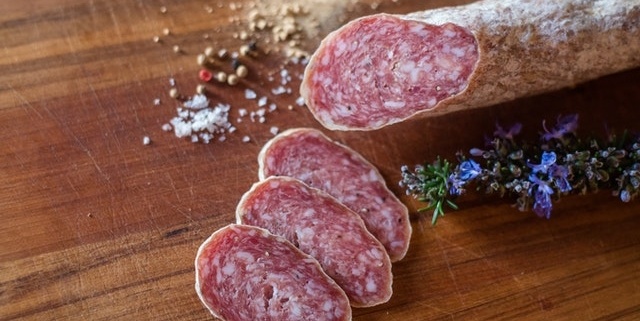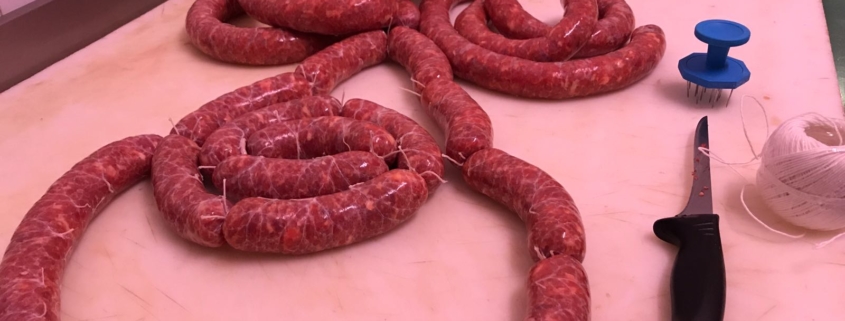Food must be properly stored to have the total safety of consuming high quality products that do not cause harm to health. Above all, it is extremely important to preserve cured meats in an intelligent way, in this way you have the possibility of always having positive results whether it is whole product, already sliced or in slices.
All that needs to be done to be able to preserve the cured meats in a way is to put into practice some small tricks that offer the opportunity to emerge victorious from this undertaking, consequently avoiding waste and damage to health.
In this article we will see together which are the best places to store these foods once opened so as to preserve all their properties. In addition, we will also show you the most suitable techniques to do this as well as what are the conservation varieties by category of cured meats together with the seasoning and how to best preserve even the sliced and spreadable cured meats.
Cured meats the techniques to preserve them
The cured meats can be kept in different ways, the type of technique is always based on the category of the type of salami purchased, the state of conservation depends and changes according to the method of making the food. Each type of cured meat matches a precise conservation strategy, do not worry: there are some attentions and fundamental criteria that must be applied in such a way as to prevent damage and having to throw the food in the trash, creating very high waste under the food plan. .
Let’s start with two principles in particular:
Humidity level: this rule in particular is important to be able to keep cured meats perfectly. Through this rule it is possible to differentiate products where the level of humidity is high, even after the period that concerns the seasoning of the food. It should be noted that all cured meats that are softer to the touch are obviously those that have undergone alterations, among the easily perishable cured meats, for example, the ciauscolo, which tends to deteriorate quickly, stands out.
Spreadable cured meats: ciauscolo belongs to the category of spreadable cured meats, as we have seen, being a food that tends to degrade rapidly, it must be kept in the fridge for about 1 month and no more.
Products intended for a long seasoning: among the main cured meats that have a long seasoning there is in particular the Milanese salami. Since this type of product is also easily perishable, it can be stored for about 7 days in the refrigerator. On some occasions it is possible to keep it in the appliance for up to 14 days in the case of long-seasoned cured meats with very large slices.
Preservation of cured meats in the refrigerator: already sliced cured meats are also very popular on the market, this type of food once opened the package immediately begins to oxidize, for this reason to consume them regularly and without health risks it is necessary to place them in the refrigerator for 4 -5 days and no later.
It is very important to know the best techniques and methods to preserve cured meats in the best possible way so as to obtain benefits from all points of view. As you have seen, there are products that can be stored in the refrigerator even for 30 days such as ciauscolo and others instead of throwing them away after 5 days and in this case it would be really a waste.
The success to be able to preserve these foods in a perfect and safe way consists in trying not to make them undergo changes under the chemical-physical level by not causing them to alter from a food point of view.
5 criteria for preserving cured meats
The main rules for storing cured meats in a safe and longer-lasting way are the following, i.e. it is necessary:
1 – Store open or sliced cured meats in the refrigerator
2 – Vacuum-sealed cold cuts
3 – Store whole cured meats
4 – Protect the cured meats in custody
5 – Perfect temperature for storing cured meats safely
Store open or sliced cured meats in the refrigerator
As a first rule, the one concerning the ideal storage place for cold cuts stands out, in this case it is the refrigerator in a specific way they must be placed in the medium-low area of the appliance.
As for the products already sliced, they can be kept in the fridge for no more than 5 days, in case there is a different point that the device recommends to put the cured meats try to insert them where the latter indicates, each model varies according to to the type of product.
Keep cold cuts vacuum packed
Among the best strategies for preserving cured meats is to apply the vacuum-packed technique, for example this is how we ship our artisanal soppressata, as it is suitable for all
types of products. Through this strategy there is the possibility of not allowing unpleasant situations to occur with consequences that tend to ruin the cured meats from a food point of view such as oxidation. Thanks to this criterion, you can protect these foods up to 5 times more than normal, on average up to 4-6 months longer in the refrigerator.
Store whole cured meats
The artisan cured meats such as the Lucanian ones and the whole ones of the Butcher and Salumificio D’Andrea offer the possibility of being kept in a place at low temperatures and therefore fresh, airy and dry. To have a more lasting result you need to hang them in such a way as to be able to keep them perfectly trying not to rest them on planes. Furthermore, you simply need to set the degrees between 15 and 20 ° C.
Protect cold cuts in the cellar
Among the artisan cured meats there are whole ones and to protect them from rapid deterioration they must be placed in cool areas of the house after having opened them or straight in the refrigerator or you can hang them in the cellar. In doing so, there is an opportunity not to allow the formation of damp and mold-related stains.
Perfect temperature for storing cured meats safely
All products that are cooked or fresh must be kept in this place at a temperature starting from + 2 ° or + 4 ° C. However, the latter must be different for vacuum packed slices and products that require a temperature below 10 ° C always inside this appliance.
While all cured meats that are still vacuum packed or packaged such as hams, pancetta, salami, sbriciolona, coppa, etc, need to be kept in a dry and cool place, it is generally recommended to put them in the lower part. refrigerator or in a cold cellar.
Is freezing cold cuts useful?
Whole cured meats cannot be frozen simply because this action that many carry out is definitely wrong. Only some types of whole vacuum-packed products can be placed in the freezer, but it is always not recommended as they could lose their organoleptic properties. This procedure that many people believe is correct does nothing but increase the level of oxidation in the food leading it to spoil.
The cured meats that must be frozen include:
- already packaged and vacuum packed;
- which have a low level of salting;
- which do not have high fat areas and in this case they must be removed before freezing them.
Finally, it is necessary to mark the date on which the freezing of the product begins in order to realize how long it has been stored in the freezer. Furthermore, after these products are taken out of the fridge and defrosted, they can no longer be refrozen, as this service would involve considerable health risks.
Artisan cured meats visit our online shop https://www.macelleriadandrea.it/negozio/







